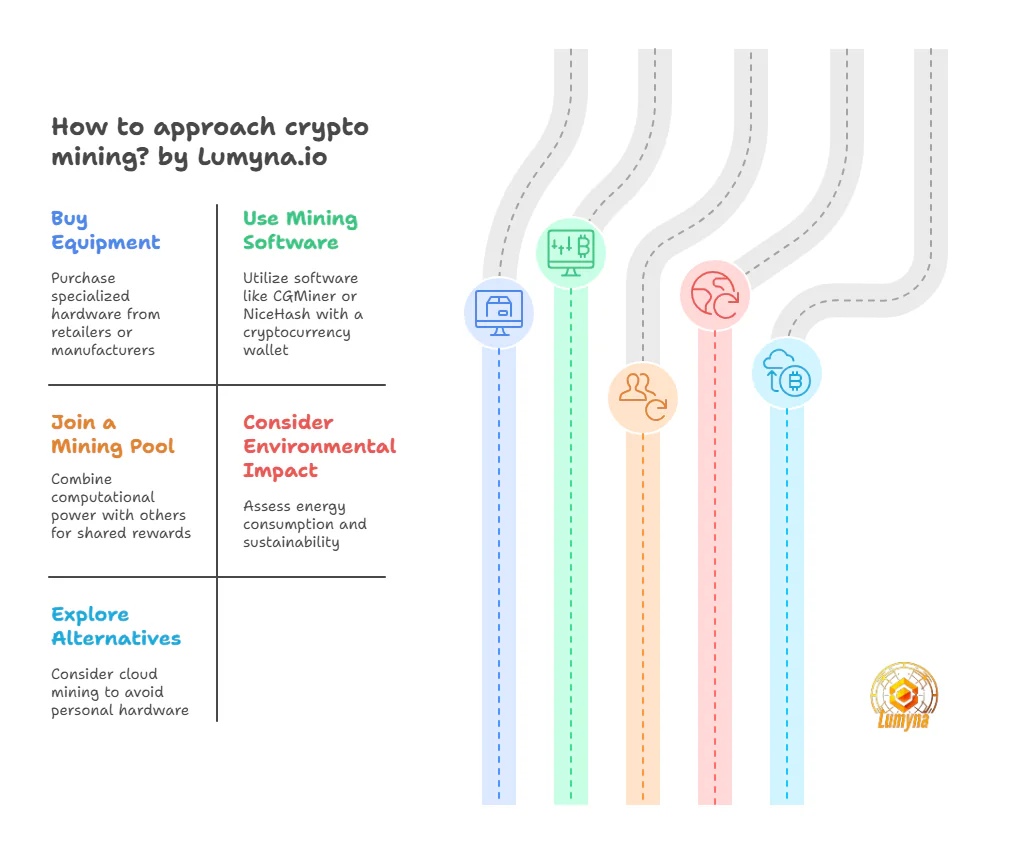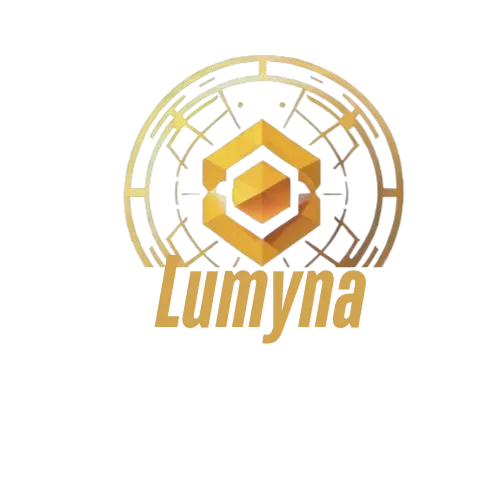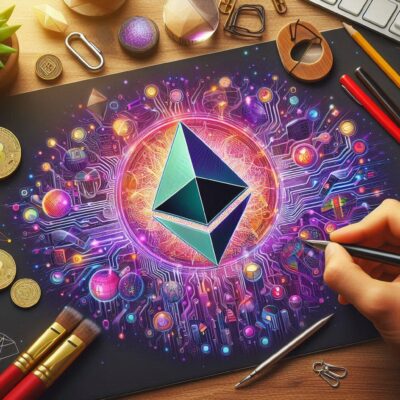
What is Crypto Mining?
Crypto mining is the process of validating and recording transactions on a blockchain network, such as Bitcoin or Ethereum, by solving complex mathematical problems. Miners use powerful computers to compete in verifying transactions, and the first to solve the problem earns rewards in the form of cryptocurrency.
Who is Involved?
Crypto mining is carried out by individuals, organizations, or mining pools. Individual miners often use specialized hardware like ASICs (Application-Specific Integrated Circuits) or GPUs (Graphics Processing Units). Mining pools, on the other hand, are groups of miners who combine their computational power to increase their chances of earning rewards, which are then distributed among participants.
When Did Mining Begin?
Crypto mining started in 2009 with the launch of Bitcoin, the first decentralized cryptocurrency. Satoshi Nakamoto, Bitcoin’s anonymous creator, introduced mining as a way to secure the network and incentivize participation. Over time, mining has evolved, with new cryptocurrencies and mining methods emerging.
Where Does Crypto Mining Happen?
Mining occurs globally, but it is concentrated in regions with cheap electricity and favorable regulations. Countries like China (before its 2021 crackdown), the United States, Kazakhstan, and Russia have been major hubs due to their access to affordable energy and mining infrastructure. Miners often set up operations in data centers or warehouses to optimize efficiency.
Why is Crypto Mining Important?
Mining is essential for maintaining the integrity and security of blockchain networks. It ensures that transactions are verified and added to the blockchain in a decentralized manner, preventing fraud and double-spending. Additionally, mining introduces new coins into circulation, supporting the cryptocurrency ecosystem.
How Does Crypto Mining Work?
Miners use specialized hardware to solve cryptographic puzzles, a process known as Proof of Work (PoW). When a miner successfully solves the puzzle, they create a new block of verified transactions, which is added to the blockchain. The miner is then rewarded with cryptocurrency. However, mining requires significant computational power and energy, leading to concerns about its environmental impact. Some cryptocurrencies, like Ethereum, have transitioned to Proof of Stake (PoS) to reduce energy consumption.
In summary, crypto mining is a critical component of blockchain technology, enabling secure transactions and decentralized networks. While it offers financial rewards, it also faces challenges related to energy use and sustainability.

Related Questions About Crypto Mining:
- Where can I buy crypto mining tools and equipment?
- Specialized hardware like ASICs and GPUs can be purchased from electronics retailers, online marketplaces (e.g., Amazon, eBay), or directly from manufacturers like Bitmain (for ASICs) or NVIDIA/AMD (for GPUs).
- What tools and software are used to mine cryptocurrency?
- Miners use hardware like ASICs or GPUs, along with mining software such as CGMiner, BFGMiner, or NiceHash. Additionally, a cryptocurrency wallet is needed to store earned coins.
- Which cryptocurrencies can be mined?
- Popular mineable cryptocurrencies include Bitcoin (BTC), Ethereum Classic (ETC), Monero (XMR), Litecoin (LTC), and Zcash (ZEC). However, some coins, like Ethereum (ETH), have transitioned to Proof of Stake (PoS), making them unmineable.
- How much does it cost to start crypto mining?
- Costs vary depending on hardware, electricity rates, and location. A basic setup can cost anywhere from 1,000to1,000to10,000, including equipment, cooling systems, and electricity.
- Is crypto mining profitable in 2023?
- Profitability depends on factors like electricity costs, hardware efficiency, and cryptocurrency prices. Mining calculators can help estimate potential earnings.
- What is the environmental impact of crypto mining?
- Crypto mining consumes significant energy, often sourced from non-renewable resources, leading to concerns about carbon emissions and sustainability.
- Can I mine cryptocurrency at home?
- Yes, but it requires powerful hardware, adequate cooling, and affordable electricity. Home mining is more feasible for smaller cryptocurrencies or using GPUs.
- What is a mining pool, and how does it work?
- A mining pool is a group of miners who combine their computational power to increase their chances of earning rewards. Rewards are distributed based on each miner’s contribution.
- What is the difference between Proof of Work (PoW) and Proof of Stake (PoS)?
- PoW requires miners to solve complex puzzles to validate transactions, while PoS allows users to validate transactions based on the number of coins they hold and are willing to “stake.”
- Are there alternatives to traditional mining?
- Yes, cloud mining allows users to rent mining power from remote data centers, eliminating the need for personal hardware.
- What are the risks of crypto mining?
- Risks include high upfront costs, fluctuating cryptocurrency prices, regulatory changes, and hardware obsolescence.
- Which countries are the most mining-friendly?
- Countries with cheap electricity and favorable regulations, such as the United States, Canada, and Iceland, are popular for mining operations.




